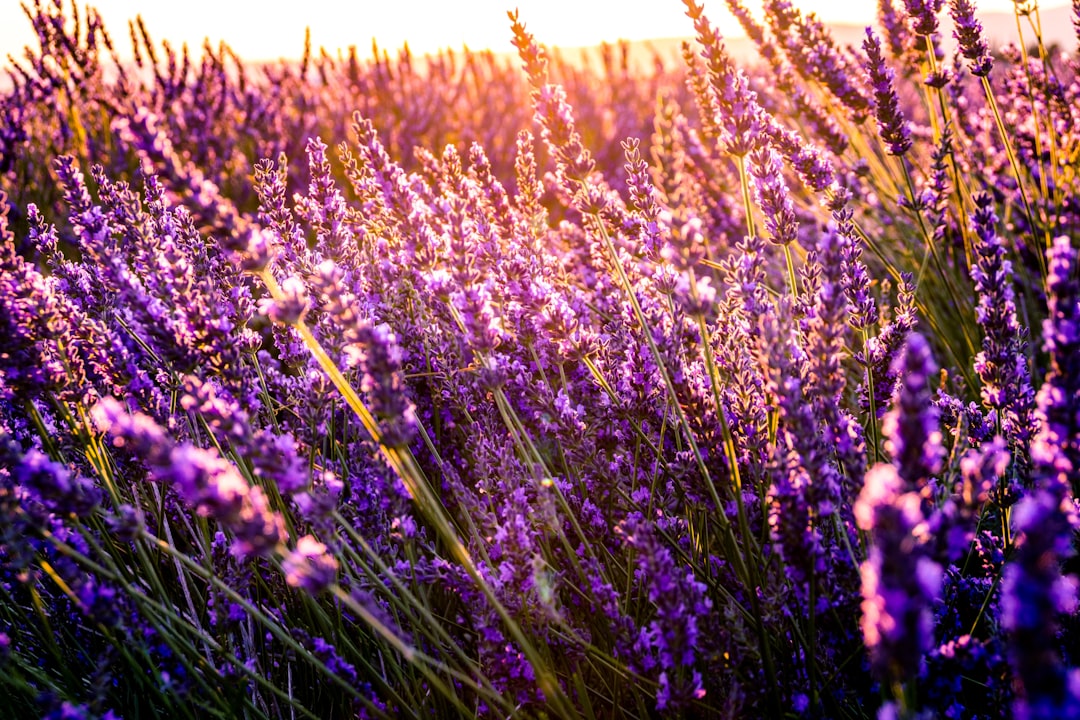Identifying a Dead Lavender Plant: Visual Cues

Identifying a dead lavender plant is an essential skill for any gardener or lavender enthusiast. Lavender plants are not only beautiful and fragrant, but they also offer a variety of benefits. From their calming scent to their medicinal properties, lavender plants are a valuable addition to any garden. However, like any living organism, lavender plants can die if not properly cared for. Being able to identify a dead lavender plant is crucial in order to take the necessary steps to either revive it or remove it from your garden.
Keeping lavender plants alive has numerous benefits. Firstly, lavender plants are known for their calming and soothing scent. The aroma of lavender has been shown to reduce stress and anxiety, making it a popular choice for aromatherapy and relaxation techniques. Additionally, lavender plants attract pollinators such as bees and butterflies, which are essential for the health and biodiversity of your garden. Furthermore, lavender plants have medicinal properties and can be used in various home remedies and natural treatments. By keeping your lavender plants alive, you can enjoy these benefits and more.
Key Takeaways
- Dead lavender plants can be identified by their lack of growth and signs of decay.
- Understanding the growth cycle of lavender plants can help prevent plant death.
- Factors such as overwatering, poor soil drainage, and pests can cause lavender plants to die.
- Visual cues such as brown leaves and a lack of new growth can indicate a dead lavender plant.
- Inspecting the roots and stems can help confirm the death of a lavender plant.
Understanding the Growth Cycle of Lavender Plants
To effectively identify a dead lavender plant, it is important to understand the growth cycle of these plants. Lavender plants go through several stages of growth and development throughout their lifespan. Understanding these stages will help you determine if your lavender plant is dead or simply dormant.
The first stage of growth is the germination stage, where the lavender seeds sprout and develop into seedlings. This stage typically lasts for a few weeks, depending on the growing conditions. Once the seedlings have established roots and developed their first set of true leaves, they enter the vegetative stage. During this stage, the lavender plants focus on growing foliage and establishing a strong root system.
After the vegetative stage, the lavender plants enter the flowering stage. This is when the iconic purple flowers start to bloom, attracting pollinators and adding beauty to your garden. The flowering stage can last for several weeks, depending on the lavender variety and growing conditions. Finally, the lavender plants enter the dormant stage during the winter months. This is a period of rest for the plants, where they conserve energy and prepare for the next growing season.
Factors That Can Cause Lavender Plants to Die
There are several factors that can cause lavender plants to die. Environmental factors play a significant role in the health and survival of lavender plants. Lavender plants thrive in well-draining soil and require full sun exposure. If the soil is too wet or if the plants are not receiving enough sunlight, they can become stressed and eventually die.
Pests and diseases can also affect the health of lavender plants. Common pests that can cause damage to lavender plants include aphids, spider mites, and root weevils. These pests feed on the leaves and stems of the plants, weakening them and making them more susceptible to diseases. Fungal diseases such as root rot and powdery mildew can also cause lavender plants to die if left untreated.
Visual Cues That Indicate a Dead Lavender Plant
| Visual Cues | Description |
|---|---|
| Yellowing leaves | Leaves turn yellow and fall off the plant |
| Dry and brittle stems | Stems become dry and break easily |
| No new growth | No new leaves or stems appear on the plant |
| Blackened roots | Roots turn black and become mushy |
| Unpleasant odor | Plant emits a foul smell |
There are several visual cues that can indicate a dead lavender plant. The most obvious sign is wilting or drooping leaves. If the leaves of your lavender plant are brown, dry, and brittle, it is likely that the plant is dead. Additionally, if the stems of the plant are black or mushy, this is a clear indication of plant death.
Another visual cue is the absence of new growth or flowers. If your lavender plant has not produced any new leaves or flowers for an extended period of time, it may be dead. However, it is important to note that lavender plants can go dormant during the winter months and appear dead. To differentiate between a dead and dormant lavender plant, you can perform a simple scratch test.
How to Inspect Lavender Plants for Signs of Life
To inspect lavender plants for signs of life, you can follow a few simple steps. Start by gently scratching the bark of the stems with your fingernail. If the stem is green and moist underneath, this is a good sign that the plant is still alive. However, if the stem is brown and dry, it is likely that the plant is dead.
Next, examine the leaves of the plant. If the leaves are green and plump, this indicates that the plant is still alive. However, if the leaves are brown, dry, and brittle, it is a clear indication of plant death. Finally, check the roots of the plant. Healthy lavender roots should be firm and white. If the roots are mushy or discolored, this is a sign of root rot and indicates that the plant is dead.
Common Mistakes in Identifying Dead Lavender Plants

There are some common misconceptions when it comes to identifying dead lavender plants. One common mistake is assuming that a lavender plant is dead simply because it has lost its flowers or foliage. As mentioned earlier, lavender plants can go dormant during the winter months and appear dead. It is important to perform a scratch test and inspect the stems and roots to confirm if the plant is truly dead.
Another common mistake is misidentifying a dormant lavender plant as dead and removing it prematurely. It is important to give your lavender plants time to go through their natural growth cycle and enter dormancy during the winter months. By being patient and observing the visual cues mentioned earlier, you can accurately determine if your lavender plant is dead or simply dormant.
How to Confirm the Death of a Lavender Plant
If you are still unsure whether your lavender plant is dead or alive after performing the initial inspection, there are additional steps you can take to confirm its death. One method is to perform a tug test. Gently tug on the stems of the plant. If they easily come out of the ground or break off, this is a clear indication that the plant is dead.
Another method is to check for any signs of new growth. If your lavender plant has not produced any new leaves or flowers for an extended period of time, it is likely that the plant is dead. Additionally, you can dig up a small portion of the root system to inspect its condition. If the roots are brown, mushy, or have a foul odor, this confirms that the plant is dead.
Preventing Lavender Plant Death: Tips and Tricks
Preventing lavender plant death starts with proper care and maintenance. Here are some tips and tricks to keep your lavender plants healthy and thriving:
1. Choose the right location: Lavender plants require full sun exposure and well-draining soil. Choose a location in your garden that receives at least 6-8 hours of direct sunlight per day and ensure that the soil is well-draining.
2. Water sparingly: Lavender plants are drought-tolerant and do not require frequent watering. Overwatering can lead to root rot and other diseases. Water your lavender plants deeply but infrequently, allowing the soil to dry out between waterings.
3. Prune regularly: Pruning helps promote healthy growth and prevents the plants from becoming woody and leggy. Prune your lavender plants in early spring or after they have finished flowering to maintain their shape and encourage new growth.
4. Provide good air circulation: Lavender plants thrive in areas with good air circulation. Avoid planting them too close together or in areas with poor airflow, as this can increase the risk of fungal diseases.
5. Mulch around the plants: Mulching helps retain moisture in the soil and suppresses weed growth. Apply a layer of organic mulch around the base of your lavender plants, taking care not to cover the stems.
When to Remove a Dead Lavender Plant
If you have confirmed that your lavender plant is indeed dead, it is important to remove it from your garden to prevent the spread of diseases and pests. The best time to remove a dead lavender plant is in early spring, before new growth begins. Use a pair of sharp pruning shears or a garden knife to cut the plant down to ground level. Be sure to dispose of the plant material properly, either by composting it or placing it in a yard waste bin.
Taking Care of Lavender Plants to Avoid Plant Death
In conclusion, identifying a dead lavender plant is an important skill for any gardener or lavender enthusiast. By understanding the growth cycle of lavender plants and being aware of the factors that can cause them to die, you can effectively identify and prevent plant death. By inspecting lavender plants for signs of life and avoiding common mistakes in identification, you can accurately determine if a plant is dead or simply dormant. By taking proper care of your lavender plants and following the tips and tricks mentioned earlier, you can keep them healthy and thriving for years to come.
If you’re curious about what a dead lavender plant looks like, you might find this article on Lawn World’s website quite helpful. They have a comprehensive guide on identifying the signs of a dying or dead lavender plant. From yellowing leaves to brittle stems, they cover it all. To explore more articles related to gardening and lawn care, you can visit Lawn World’s sitemap page.
FAQs
What is a lavender plant?
Lavender is a flowering plant in the mint family known for its fragrant aroma and beautiful purple flowers.
What are the signs of a dead lavender plant?
A dead lavender plant will have brown or black stems, wilted leaves, and no new growth.
What causes a lavender plant to die?
Lavender plants can die due to overwatering, underwatering, poor soil drainage, pests, diseases, or extreme temperatures.
How can I revive a dying lavender plant?
To revive a dying lavender plant, you should prune away any dead or diseased parts, improve soil drainage, water it properly, and provide it with enough sunlight and nutrients.
Can a dead lavender plant be saved?
If a lavender plant is completely dead, it cannot be saved. However, if there is still some green growth, it may be possible to revive it with proper care and attention.
How can I prevent my lavender plant from dying?
To prevent your lavender plant from dying, you should plant it in well-draining soil, water it properly, prune it regularly, and protect it from pests and diseases. Additionally, you should avoid over-fertilizing and exposing it to extreme temperatures.



